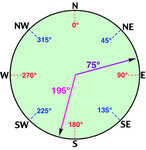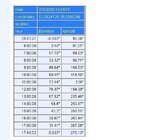ajitnayak
Junior Member level 2

 View attachment NREL data.zip
View attachment NREL data.zipDear all,
I am trying to achieve single axis tracker using Below algorithm.Here i have attached relevant document and Links.
Now problematic term:
My single axis tracker going to placed in North south direction . Axis of rotation is east to west. I have sensor which can measure angle from 90degree to -90 degree. From below link for my location Bangalore India. Azimuth angle will be 90 degree i.e @ east point. 180 degree at south point 12:15 PM,270 at 6:30 PM again start at 0 in morning.Now i wanted to determine sun position using these angle in +90degree to -90 degree format.
In morning it must be -90 degree
in noon it must around 0 degree
In evening almost 90degree.
Question here how to convert these angle to +90 to -90 degree format.